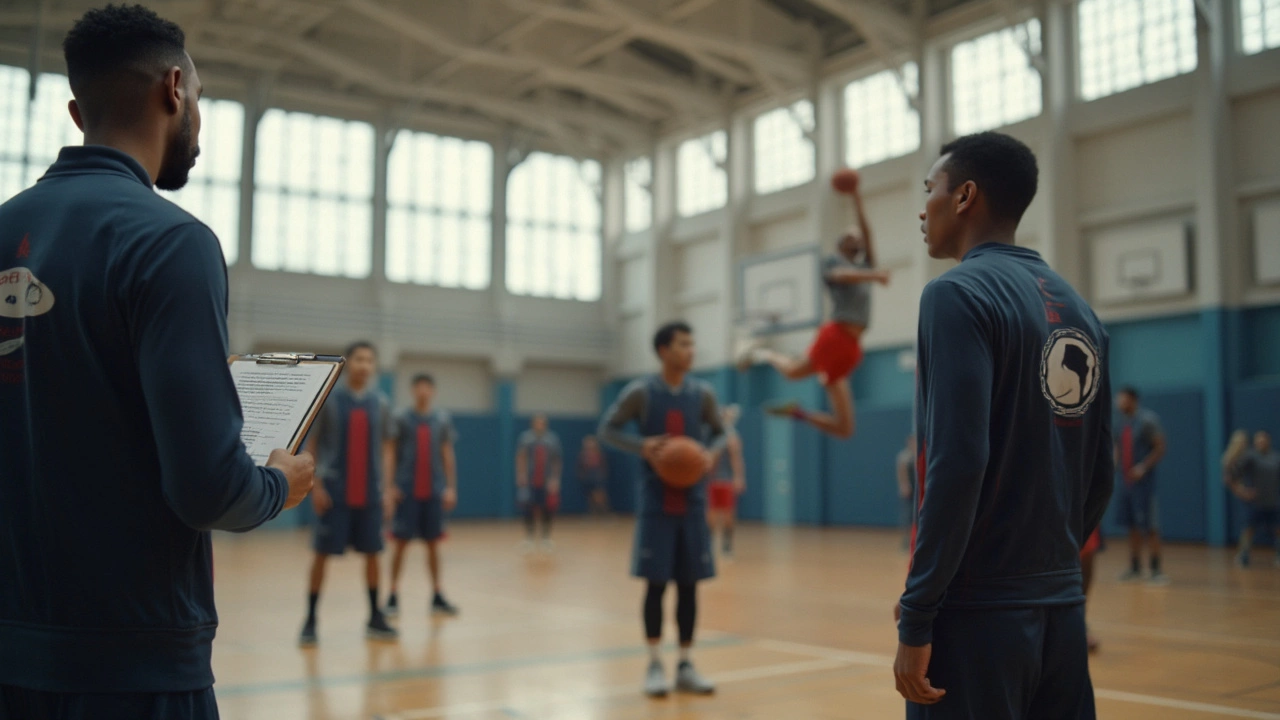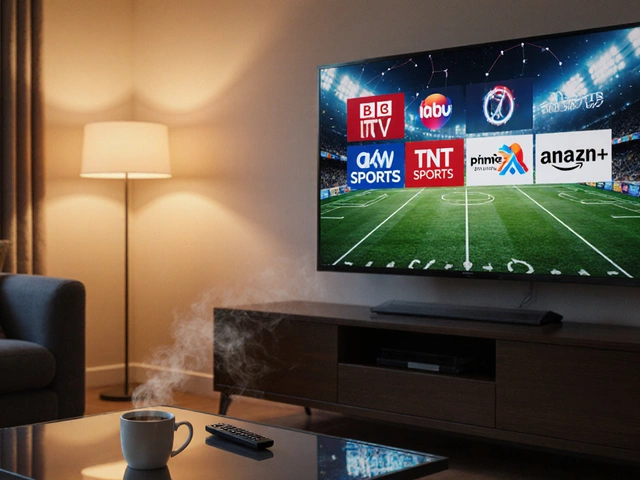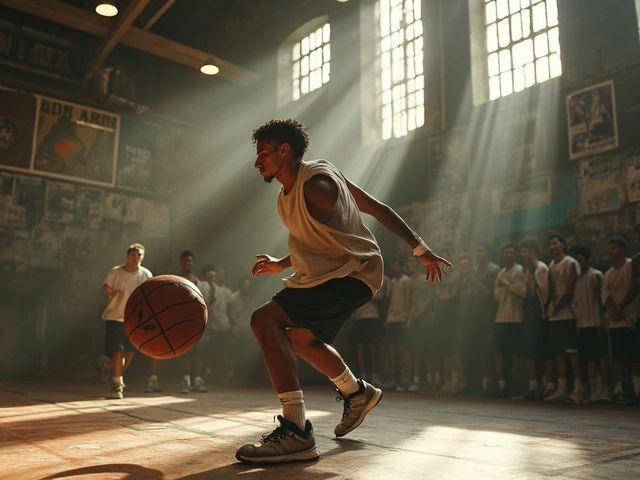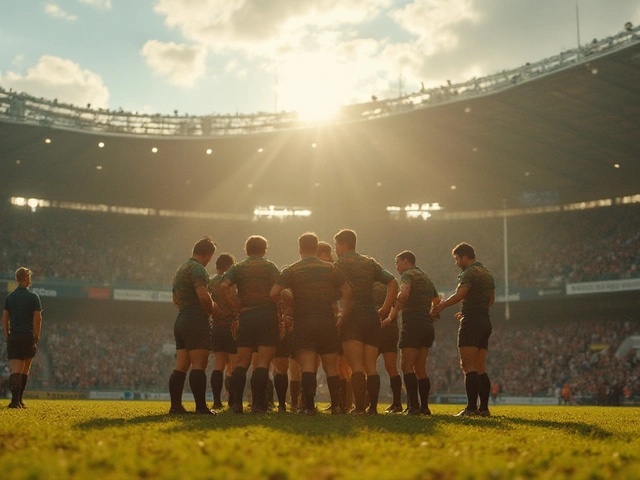
Basketball April 30, 2025
How to Get Into the G League: Your Roadmap to Pro Basketball
Everybody talks about making it to the NBA, but what they don't tell you is how important the G League is as a real step toward that dream. A lot of players with solid college stats still don’t get drafted, but wind up in the G League and work their way up—sometimes in a season or two.
You’re probably wondering: can you just show up to a tryout and get picked? Not quite. The G League is packed with guys hungry for a shot, so you have to walk in ready to stand out. But it’s not all about blowing past everyone in a scrimmage. Coaches are looking for specific things: skills, hustle, and, honestly, how you move without the ball.
If you’re serious, you’ll want to know how the G League fits into the bigger basketball picture, what tryouts actually look like, what scouts really care about, and the smartest ways to catch their eye. More importantly, you’ll want some advice from people who've actually seen what works (and what tanks your shot) up close.
- What Is the G League and Why Aim for It?
- The Tryout Process: What Actually Happens
- Skills and Qualities Scouts Want to See
- Building a Basketball Resume That Gets Attention
- Realistic Tips for Maximizing Your Shot
What Is the G League and Why Aim for It?
The G League is the NBA’s official minor league. It works almost like a talent pipeline straight to the NBA. Teams use it to develop young draft picks, help veterans rehab, and, most importantly, discover overlooked players who have what it takes.
Think of the G League as the stage where you show NBA teams you can ball at a pro level. It’s where scouts and coaches constantly keep an eye out for the next call-up. In the 2023-2024 season, there were over 50 NBA G League players who got NBA contracts. Remember Austin Reaves? He went undrafted, started in the G League, and now plays real minutes in the NBA. Stuff like that happens every year.
Unlike overseas leagues or random tournaments, the G League is directly linked to every NBA franchise. Most teams either own their affiliate or are directly connected through shared staff and facilities. Players grind through a 50-game season that mirrors the NBA in style, rules, and intensity. That means real NBA scouts watching almost every game.
If your goal is to reach the NBA, these are the key reasons to go all-in on the G League:
- Direct NBA exposure: Every game is like an audition with the bosses watching.
- NBA-level development: Coaches, trainers, and facilities are often shared with NBA teams.
- Chance for a two-way contract: This lets players bounce between G League and NBA with higher pay and more chances to prove themselves.
- Networking and connections: You train and play alongside top prospects and former NBA players. Relationships matter.
- Better pay than most overseas leagues: It’s not NBA money, but the benefits and visibility can make it worth it if your sights are on the NBA long-term.
Pro basketball is a tough grind, but aiming for the G League puts you right in front of the people who decide your career. That’s not a shortcut, but it’s a clear path, and the success stories speak for themselves.
The Tryout Process: What Actually Happens
So you want to get into the G League. First thing to know: anyone can sign up for an open tryout. Most teams hold these once a year, usually in late summer or early fall. For a slot, you’ll pay a non-refundable fee—usually around $150 to $200. Sometimes, hundreds of players show up. Picture long lines, lots of nervous energy, and guys of all ages and backgrounds hoping to stand out for just a few hours.
Here’s how a typical tryout breaks down:
- Check-in and warmup: Staff checks your ID, you get a jersey with a number, and you start stretching and getting loose. A lot of college shirts and team gear everywhere.
- Skill drills: Coaches watch basics like ball handling, shooting from different spots (especially NBA range), passing, and defense. There’s not much downtime, so being in top shape really helps.
- Scrimmages: After skills, everyone gets grouped into teams for five-on-five games. This is when most decisions are made. Coaches want to see basketball IQ, hustle, and how you play as part of a unit—not just isolation moves.
- Final cuts: By the end, staff will pull a handful of players aside. Some might get invited to the team’s actual training camp. The vast majority, though, are heading home with some new Instagram followers and a cool story.
The real secret? Most players who make it already have a strong basketball resume—college stats, overseas experience, or high-level AAU. Walk-ons rarely make rosters, but it’s not impossible if you really shine.
What do the people in charge say about it? Check out this blunt advice:
"We’re looking for guys who compete, communicate, and don’t play selfish. Lots of talent comes through here, but if you’re out for highlights, we notice—and usually skip you."
—Jordan Brady, former G League coach
If you’re thinking stats matter, they do. One team rep said only about 1 in 5 open tryout players even gets considered for training camp—and fewer than that make the final roster.
| Step | What To Expect |
|---|---|
| Registration | Online or on-site, pay fee, get schedule |
| Skills Drills | Shooting, ball-handling, passing, defensive slides |
| Scrimmages | 5-on-5, coaching staff actively evaluating |
| Cuts/Notices | Final call-outs, possible camp invite |
Bringing your best game isn’t just about talent. Be vocal, defend hard, and hustle every possession. Even if you don’t get picked, you’ll pick up real insight on what separates almost-pros from the rest. If you want that pro basketball shot, you can’t just blend in—you’ve got to give coaches a reason to remember your number.

Building a Basketball Resume That Gets Attention
If you want a legit shot at the G League, your basketball resume absolutely matters. That’s how coaches, scouts, and GMs size you up before you even touch the court at tryouts. You need more than just a list of where you played. You’ve got to show what makes you different and why you can hang in a pro environment.
Here’s what your resume should cover so it stands out:
- Stats matter, but honesty matters more. Put your actual numbers—points, assists, rebounds, steals, blocks—from your most recent league or school. If you averaged 7.5 points and 4 boards, put that. Scouts sniff out fake stats fast.
- Height, weight, and position. Put your recent measurements from a real source. Don’t try to round up two inches on your height; they’ll measure you at tryouts.
- Teams and tournaments. List every team, league, or tournament you’ve played with in the past two years. If you played at a community college, in a D-II or D-III program, or even overseas, put it down.
- Coaches’ contact info. Real references count. Add the names and numbers of people—preferably a coach or trainer—who can speak honestly about your work ethic and skills.
- Highlights—keep it sharp. If you’ve got a highlight reel, link it. Don’t just throw in a random YouTube video with all dunks. Put together clips that show defense, hustle, and smart plays as much as flashy scoring.
Here’s what the numbers look like for players who caught a scout’s attention last year, based on G League tryout invitations:
| Skill Area | Typical Standout Stat |
|---|---|
| Points per game | 14.8 |
| Assists per game | 4.2 |
| Steals per game | 1.7 |
| FG% | 48% |
Those numbers aren’t the minimum cut-off, but they’re what pops off the page. Even if you’re not hitting those exact stats, being able to show improvement or a killer work ethic can help your basketball resume get noticed.
One more thing: every year, team staff say the same thing—don’t make your resume look like spam. Get to the point and keep it clean. One page, max, in a simple format. That way, your story’s easy to read and doesn’t get tossed in the pile.
Realistic Tips for Maximizing Your Shot
Not everyone cracks the G League on their first try, so let’s talk strategy that actually pays off. Training for a pro league means more than throwing up a thousand jumpers. You need to dial in on what puts you ahead—on paper, in the gym, and in front of scouts.
First, go where the scouts are looking. About 40% of current NBA players have spent time in the G League, according to the NBA’s 2023 season data. That means team scouts watch these games and pay legit attention to G League standouts. If you’re shooting for NBA-level exposure, this is the path.
- Master the basics consistently. Coaches are hunting for players who make the smart play every time. Turnovers, lazy defense, or forcing shots will crush your chances. Stick to playing smart basketball, even if it doesn’t make the highlight reel.
- Show out in hustle stats. Take charges, dive for loose balls, get defensive stops. G League coaches love players who grind for every possession. These "energy plays" are easy ways to get noticed.
- Live like a pro—even if you aren’t one yet. Good sleep, smart diet, zero drama. Being high maintenance is an instant red flag in a tryout setting.
- Promote yourself (the right way). Put together clips of your best games and highlight your versatility—can you guard up or down? Can you run point in a pinch? Tag league coaches and teams on social, but keep it professional.
- Network with people already in the league. A direct recommendation or even just a familiar name goes way further than most people think. Go to open workouts, message current players, or volunteer at camps where coaches work.
Time for a reality check. Ignore the overnight-success stories. Training with a private coach, getting reliable feedback, and playing in solid summer leagues can be the difference between a "so-so" tryout and one that gets you a callback.
Here’s a quick look at the backgrounds of players who made opening day G League rosters in 2024:
| Pathway | % of Players |
|---|---|
| NCAA Division I | 61% |
| International Pros | 14% |
| Other U.S. Colleges | 10% |
| G League Ignite/Overtime Elite | 9% |
| Undrafted/Other | 6% |
And remember—accept feedback. Even if it stings. As former G League coach Scott Morrison put it:
"The guys who stick are always the ones who listen, show up early, and stay late. You’ve got to treat every day like it’s your only shot."
So don’t just hope it works out. Prepare smarter, play harder, and think like someone who’s already made it.




